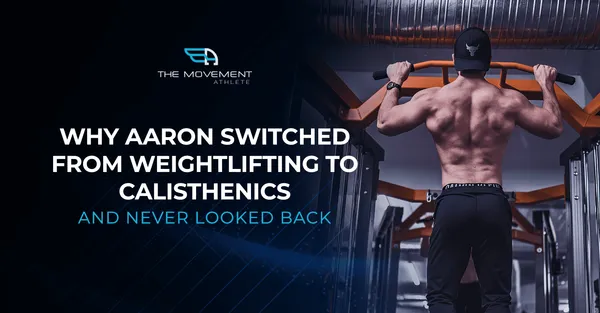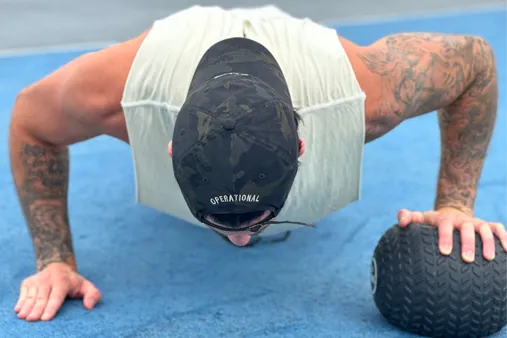Table of Contents
Are you thinking about quitting weights for calisthenics? You're not alone. More and more people are making the switch, and for good reason. Calisthenics is a great way to get fit, build muscle, and improve your overall health. And contrary to popular belief, you don't need any fancy equipment or a gym membership to get started. In this article, we'll discuss the benefits of calisthenics, how to get started, and what to expect when you make the switch. We'll also provide some tips for making the transition as smooth as possible. So if you're ready to ditch the weights and start training with your own bodyweight, read on!
Benefit | Challenge | Transition Tip |
|---|---|---|
Improved bodyweight strength | Muscle loss | Start with bodyweight exercises that are challenging but achievable. |
Enhanced flexibility and mobility | Reduced muscle mass | Incorporate stretching and mobility exercises into your routine. |
Increased endurance | Soreness and fatigue | Listen to your body and rest when needed. |
Reduced risk of injury | Lack of external resistance | Use proper form and gradually increase intensity. |
Convenience and accessibility | Limited exercise variety | Explore different calisthenics exercises and variations to target various muscle groups. |
I. Benefits of Quitting Weights for Calisthenics
Improved Bodyweight Strength
Calisthenics exercises rely solely on your bodyweight as resistance, which forces your muscles to work harder to stabilize and control your movements. This can lead to significant improvements in bodyweight strength, making everyday activities easier and more enjoyable.Related: How to Do a Muscle-Up
Enhanced Flexibility and Mobility
Calisthenics exercises often involve dynamic movements that require a wide range of motion. This can help to improve your flexibility and mobility, reducing your risk of injury and making it easier to perform everyday tasks.Related: How to Get Started with Calisthenics as a Beginner
Benefit | Challenge | Transition Tip |
|---|---|---|
Improved bodyweight strength | Muscle loss | Start with bodyweight exercises that are challenging but achievable. |
Enhanced flexibility and mobility | Reduced muscle mass | Incorporate stretching and mobility exercises into your routine. |
Benefits of Quitting Weights for Calisthenics
II. Challenges of Transitioning from Weights to Calisthenics
Muscle Loss
One of the biggest challenges of quitting weights for calisthenics is the potential for muscle loss. When you lift weights, you are putting your muscles under a lot of stress, which causes them to break down and rebuild stronger. This process is known as muscle hypertrophy. When you switch to calisthenics, you are no longer putting your muscles under the same amount of stress, which can lead to muscle loss.How to Build Muscle and Strength With Calisthenics
Benefit | Challenge | Transition Tip |
|---|---|---|
Improved bodyweight strength | Muscle loss | Start with bodyweight exercises that are challenging but achievable. |
Enhanced flexibility and mobility | Reduced muscle mass | Incorporate stretching and mobility exercises into your routine. |
Increased endurance | Soreness and fatigue | Listen to your body and rest when needed. |
Reduced risk of injury | Lack of external resistance | Use proper form and gradually increase intensity. |
Convenience and accessibility | Limited exercise variety | Explore different calisthenics exercises and variations to target various muscle groups. |
Reduced Muscle Mass
Another challenge of quitting weights for calisthenics is the reduced muscle mass. When you lift weights, you are using external resistance to challenge your muscles. This resistance helps to build muscle mass. When you switch to calisthenics, you are no longer using external resistance, which can lead to a decrease in muscle mass.The Benefits of Calisthenics for Bodyweight Training
- Coffee
- Tea
- Milk
Challenges of Transitioning from Weights to Calisthenics
III. Tips for a Successful Transition to Calisthenics
Start Slowly
When you first start transitioning to calisthenics, it is important to start slowly. This will help to prevent injuries and ensure that you can progress steadily. Begin with exercises that are challenging but achievable, and gradually increase the difficulty as you get stronger.
A few exercises to start with:- Push-ups how to do a push-up- Squats how to do a squat- Lunges- Planks how to do a plank- Pull-ups how to do a pull-up
Listen to Your Body
It is important to listen to your body and rest when needed. If you experience any pain or discomfort, stop exercising and consult with a doctor or physical therapist.
Calisthenics can be strenuous on the joints. Hence, it's important to stretch before and after exercise, as well as to listen to your body and rest when needed. If you experience any pain, stop exercising and consult with a doctor or physical therapist.
Incorporate Variety
To avoid boredom and ensure that you are working all of your muscle groups, it is important to incorporate variety into your calisthenics routine. There are many different calisthenics exercises to choose from, so you can create a routine that is challenging and enjoyable.
There are many different types of calisthenics exercises, including:- Bodyweight exercises- Plyometric exercises- Gymnastics exercises- Flexibility exercises
Tips for a Successful Transition to Calisthenics
IV. Long-Term Effects of Quitting Weights for Calisthenics
Functional Fitness
One of the most significant benefits of quitting weights for calisthenics is an improved functional fitness. Calisthenics exercises are compound movements that work for multiple muscle groups simultaneously. This type of training can help improve your overall strength, balance, coordination, and agility, which translates into better performance in everyday activities and sports.
In contrast, weightlifting focuses primarily on isolated movements that target specific muscle groups. While this can be effective for building muscle mass, it may not be as beneficial for improving functional fitness.
Read more about the benefits of Calisthenics
Injury Prevention
Calisthenics exercises are generally less stressful on your joints and connective tissues than weightlifting exercises, as they involve using your own body weight as resistance. This can help to reduce your risk of injury, especially if you have a history of joint pain or injuries.
Weightlifting, on the other hand, can put a lot of stress on your joints and connective tissues, especially if you are not using proper form. This can increase your risk of developing injuries, over time, which can hinder your fitness progress.
Read more about the Injury prevention
Type of Training | Functional Fitness | Injury Prevention |
|---|---|---|
Calisthenics | Improved | Reduced Risk |
Weightlifting | Limited | Increased Risk |
V. Conclusion
Quitting weights for calisthenics can be a great way to improve your fitness and overall health. Calisthenics is a versatile and challenging form of exercise that can be done anywhere, anytime. It is also a great way to build strength, endurance, and flexibility. If you are thinking about quitting weights for calisthenics, there are a few things you should keep in mind. First, it is important to start slowly and gradually increase the intensity of your workouts over time. Second, be sure to listen to your body and rest when you need to. Third, find a workout buddy or join a calisthenics class to stay motivated and accountable. With a little effort and dedication, you can achieve your fitness goals with calisthenics.